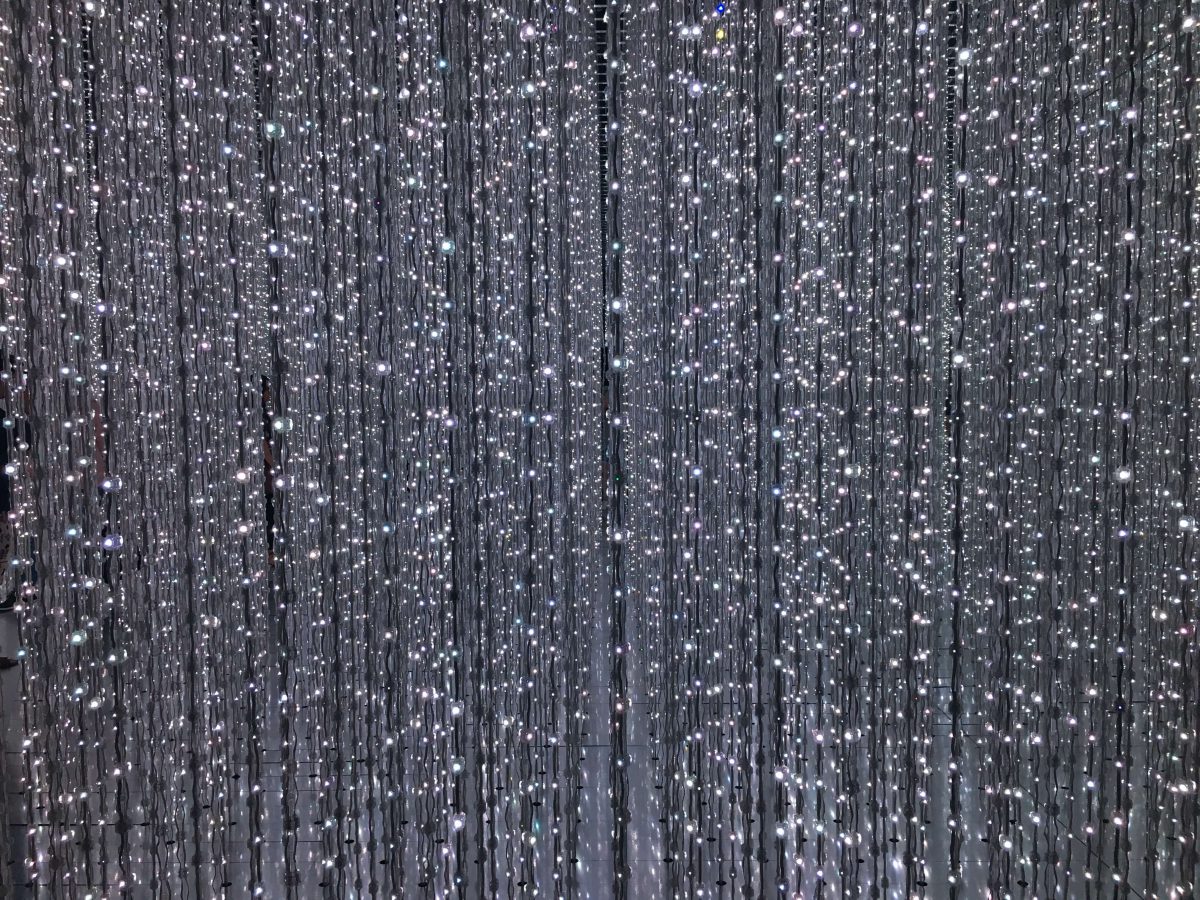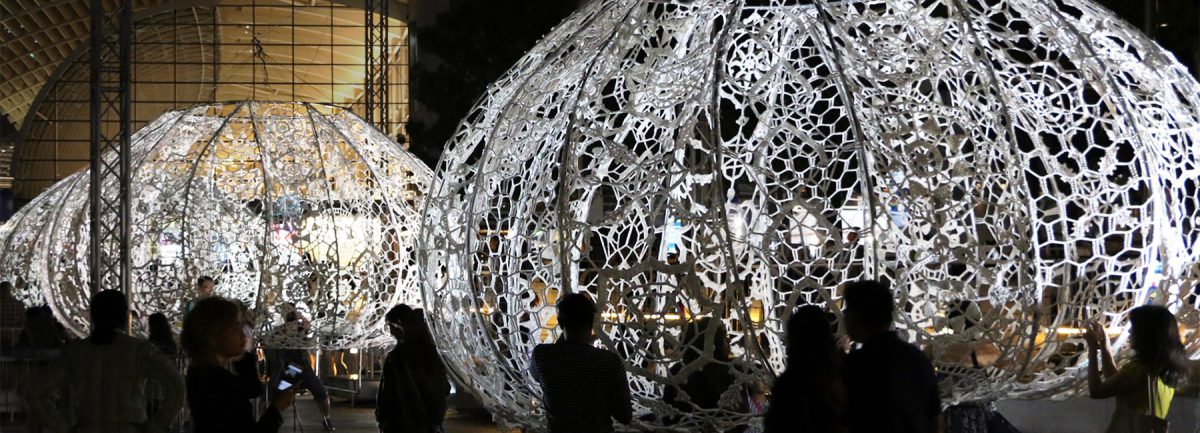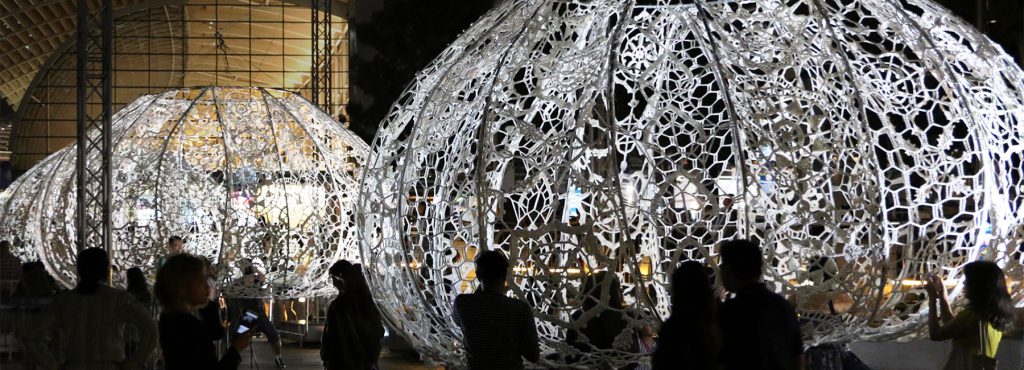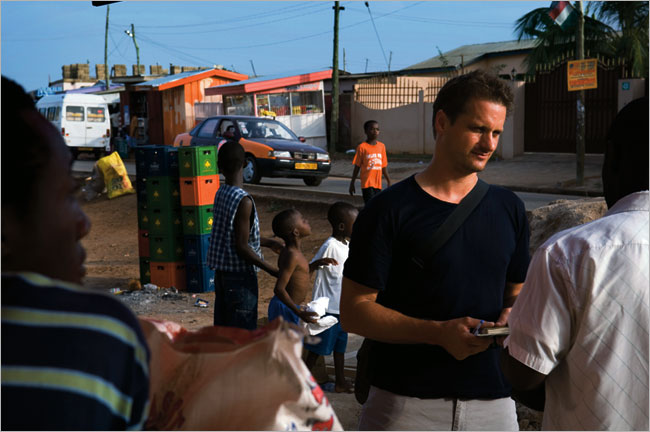






















Month: September 2017
ADM-DIP White iLight Proposal
ADM-DIP White iLight Proposal
Concept:
Show the harm of non-biodegradable materials and the seriousness of our actions through an immersive interactive experience.
- Step
Reminds us of our existence on the earth - Butterfly effect
A single step will shake nature’s balance - Ripple effect
A single step will impact the whole earth - Chaos theory
A single step will bring our delicate earth into chaos - Theory of synergy
Multiple steps combined will cause a chaotic mess
We want the audience to realise that they are making an impact on the exhibit, which represents the cause of using non-biodegradable materials
Source of ideas for concept:
- 1.Link: https://www.youtube.com/watch?v=oGTOq4RGMP4&feature=youtu.be
- Link: https://www.youtube.com/watch?v=oGTOq4RGMP4&feature=youtu.be
- Link: https://www.youtube.com/watch?v=gGbhp6Y_7d0
- Link: https://www.youtube.com/watch?v=OKABrimxZiw
- Aurora Website link: http://www.lucent-design.co.jp/works/aurora.php
- Link: https://www.youtube.com/watch?v=MECLeOFJqoM
- Link: https://www.youtube.com/watch?v=C9Fta-96V7Q
Input:
-Steps for audience to interact with: each contribution/action causes a reaction
Initially there will be minimal wind
-Have a signifier to show what turns on when you step on it
-Steps can be made of non-magnetic metal or acrylic, rubber material that doesn’t bend easily when there is pressure
-LED lights hanging on the material
Output:
-Fans will turn on, speed varies every time someone steps on it
-LED lights will change colour KIV
-2 layers of material
-Possible non-biodegradable materials (material that is able to bend and flow with the wind/durable/hold LED lights):
- Plastic bottles to thin strips
- Plastic strips/curtain (or a lighter version)
- Fabric wire mesh
- Shower curtain
- Cling wrap
- Chiffon (silk chiffon/polyester chiffon)
- Organza
- Organdy
- Sheltered area → enclosed space around the site?
Some things we can consider:
-different part of fabric – different colour
-combining materials (consider durability)
Future World: Reflection
Though I’ve been to this exhibition a few times, every time I step in and experience the installations it feels like I’ve never been there before. This time, the immersive experience that I felt was so much more as compared to the previous times that I’ve been there. I was able to take my time and soak in each installation and I guess this was what made me feel so much during this visit.
The first installation that I experienced was called ‘Crows are Chased and the Chasing Crows are destined to be Chased as well, Transcending Space.’ This immersive installation made use of a 3D space, video and audio and it felt real when it was ongoing. In some parts when I was focusing on a certain spot, my mind and body began playing tricks and it felt that I was floating in this virtual space.
Another installation that I experienced was the Black Waves. It depicts the movement of the waves in the sea and this effect of repeating the waves was just so calming when I was sitting and enjoying the movement of the water. What I felt was important as well was the use of audio. The music was calm, soothing, and it really fits the image of the waves, making the waves feel as if they were alive.
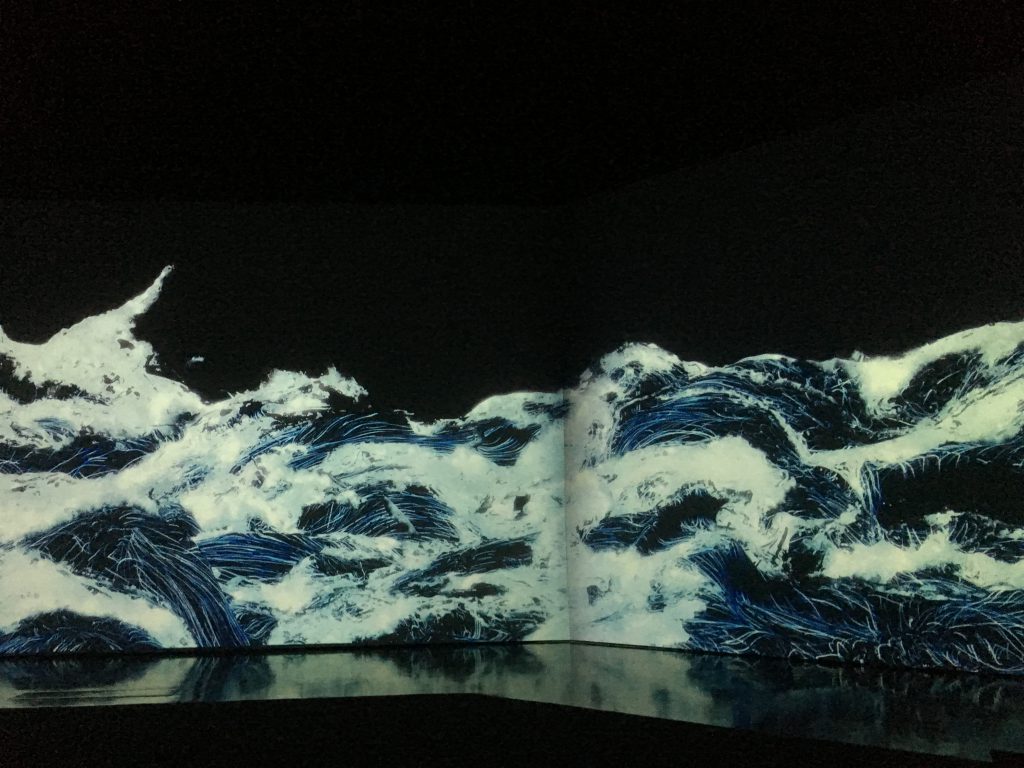
Lastly, Crystal Universe caught my attention and was my favourite amongst all the installations in Future World. This installation uses audio, lights and human interaction to immerse you into a space where you find yourself walking and existing in the center of universe, while the movement and effect of the lights make you feel as though you are travelling through it. This installation is made unique as the audience are able to participate in it, by changing the motion and colours of the lights through their phone. This makes every experience a different one.
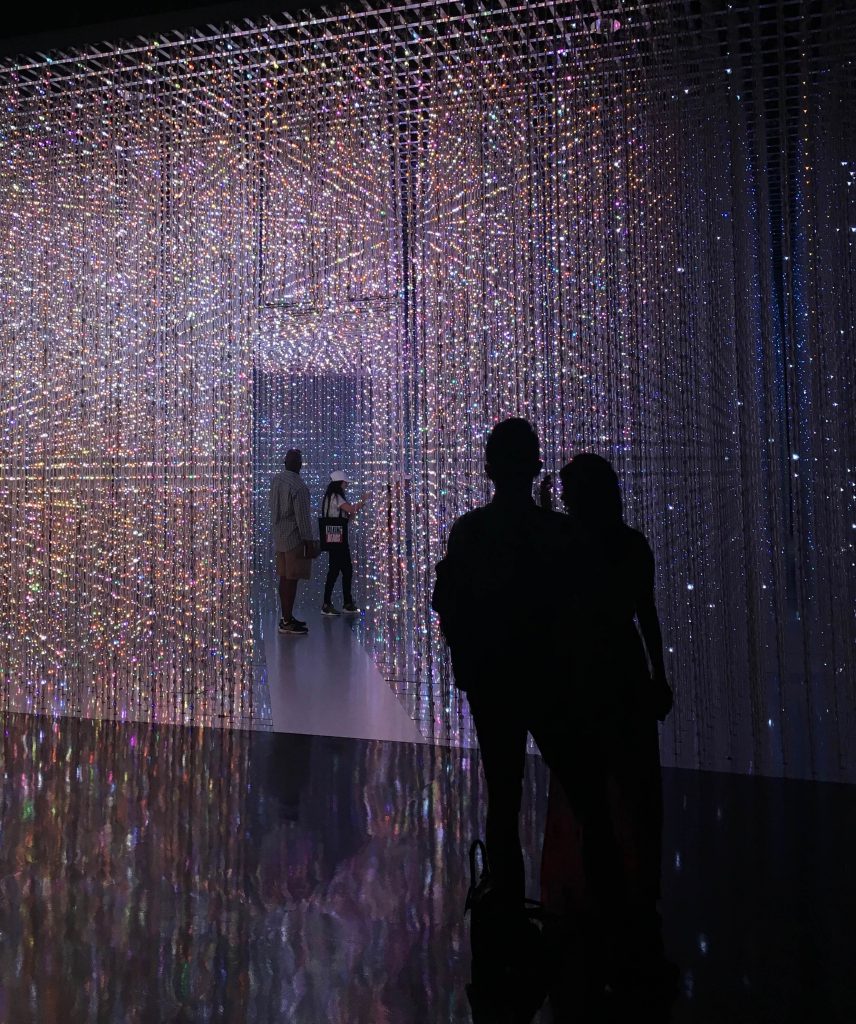
Personally, what I’ve learned in this exhibition is the importance of how space, audio, and visualisation should work together, and can work together if we want to create an experience that is alluring, exciting and immersive. It is also important to find a balance between these three aspects, and when we’ve learned how to do this, there is so much more potential in creating something for people to experience the extraordinary.
Sustainability In The Form of iLight
Sustainability to me means the ability to be maintained at a certain rate and to use minimal energy while producing the best results. It also means for something to be able to withstand a long period of time and to be able to be passed down from generation to generation, for example an authentic piece of wooden furniture, a technology or design that is able to be relevant in the present as well as in the future. In the iLight festival, I find it interesting to combine the use of light and art to get people engaged and become more aware of the importance of sustainability. This method is more influential in the future generations, as we value art and design more than the older generations in Singapore.
The Urchins (iLight Festival 2017), is one of my favourite pieces this year. Using traditional methods of crocheting, the results of the surface is intricate yet it creates a sense of harmony and tranquility. In the day, the interaction with natural light causes a play between the physical object and the shadow that is casted on the floor. It absorbs sunlight, and retransmits and reflects it. At night, the Urchins illuminate and glow, creating a sense of enchantment and magic. The glow at night are created by spotlights, which shines onto certain parts of the surface and the rounded shape of the object and material of the surface (white double braided polyester cord) causes light to bounce and reflect within themselves, which makes the objects seem brighter than they actually are. The designers behind the Urchins have been successful in using minimal energy and light while at the same time producing maximum luminosity, and also incorporating sustainability with art.
You Are What You Carry (Chapter 4): Response
I do agree with Chipchase that we carry items that give us a sense of security, and sometimes this sense of security causes us to carry more than we need. This results in having many things in our bags, pockets and wallets and it can be a burden to carry, but if it is essential to survive and for us to go about our daily lives without any hiccups, why not?
An interesting example in this chapter is the life of Meili, where Chipchase accounts that her handbag never leaves her sight, and she was even upset when she realised that she had left her bag unzipped. In countries like China or India where theft is frequent, people become more vigilant and sensitive to their surroundings and belongings. On the contrary, in a relatively low theft rate country like Singapore, you would realise that leaving your mobile phone and wallet on the table while you eat is very common. This can result in forgetting about them when you leave the area after you have eaten because we are not being ‘forced’ to be sensitive about our belongings. This is similar to having all our information and essentials in our phones. Knowing that we have everything at the tip of your fingers would make us less aware, because we know that our devices will remind us of what we need to do. Being humans, we adapt to this instant lifestyle quickly and could make us be impatient if we cannot get things we want quickly and conveniently.
In relation to this where the future moves on to storing files and money in clouds and abstract or intangible places where you know it’s there, but you cannot see it, people start to be less aware and watchful of their items. For example Chipchase mentioned about having credits in your fare card and not tracking how much you have, resulting in carrying more cards than what you actually need. Of course, it is useful when your credits are combined and made available in a single physical form like the mobile phone, where you can link your fare card to your credit card, and you do not have to worry about insufficient credits. However, with everything combined into a single device, there is still a high risk of system failure or theft. One moment you could have everything in there and the next moment it’s gone.
With this in mind, people are starting to come up with ideas of owning something without it actually being yours. For example in a local context, we have the Obike, where you can rent a bicycle anywhere and ride it to anywhere you want. Like what Chipchase says, ‘There’s no way to steal something that has no owner.’, we do not have to worry about our bicycle being stolen because it is not ours to begin with. That being said, however, we cannot forget that out there it is the business that is losing money.
Lastly, as technology develops, our lifestyle changes and human behaviour will evolve. Like the vending machine in Japan, where we can check our credits to see if we still have enough to buy a soda or not, it is important to consider the endless possibilities of the human behaviour and experience when we want to design for the future.
The Anthropology of Mobile Phones: Response
In Chipchase’s 2007 TED Talk video, he pointed out three items that he felt was essential to us in our daily lives- wallet, keys and phone. Till this day, I believe that these three items are still as important as we go about our everyday lives and sometimes to the extent that we’ll panic and worry if one of these go missing.
I find it interesting that even in developing countries such as Ghana are also strongly dependent on money and mobile phones, which essentially proves that these are methods for survival. The method of transferring money using prepay cards reminds me of the term ‘reserve innovation’, where less developed countries or industries innovate and then these innovations are distributed into developed markets. From just a small business in transferring money through mobile phones as a means to survive, this proves that even with few resources people are able to adapt and come up with ideas to make life easier, which I feel how designs should be. In this case, Chipchase has correctly predicted the future of transferring money, which is now what we call iBanking.
Even though having a one-fits-all tool like iBanking that can be useful for people in both developing and developed countries, some technology may not necessarily fit the needs of everyone. For example, for someone who might only need basic applications like instant messaging, a universal phone like the iPhone would seem like a waste of resources. We get too caught up in having entertainment in our phones and we end up developing applications that do not serve the basic needs of some people who are suffering from real life issues like mental illnesses or starvation. I feel that to create something of worth, as Chipchase has mentioned, we need to move towards listening to people and get down to creating something that helps us to survive.


